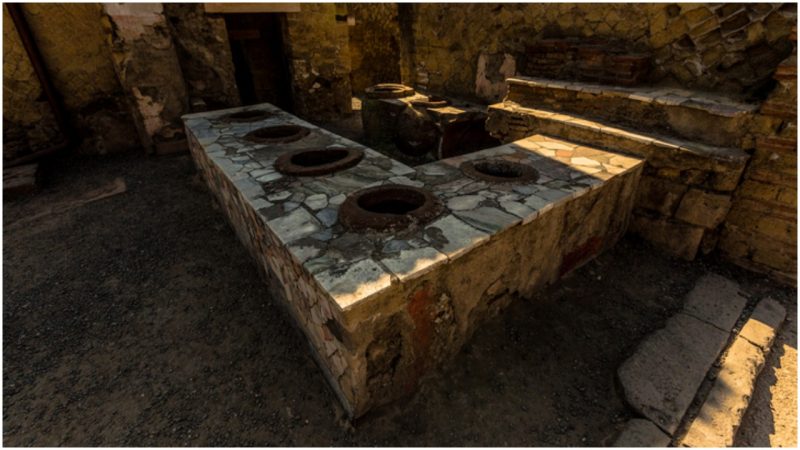People today believe that the concept of fast food, instant meals and take-away are results of the contemporary strive for more profit on account of time, yet, historical records have shown that these so-called notorious nutritional counterparts have been very common since Ancient Greece and Rome.
According to Business Insider, when the poverty-stricken Ancient Romans wanted to have a hot meal, they usually dropped by at what is determined to have been “thermopolia” I.e. fast food joints that provided fast and affordable meals for the poor.
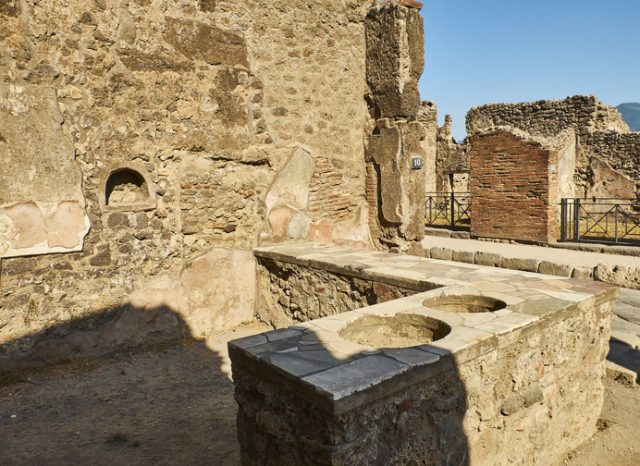
The word “thermopolia” literally means “places where hot meals and drinks are sold”. Moreover, the historian Steven J.R. Ellis explained that the term which described what is known now accepted as “thermopolia” was rather interchangeable and rarely used back in the days of Ancient Rome.
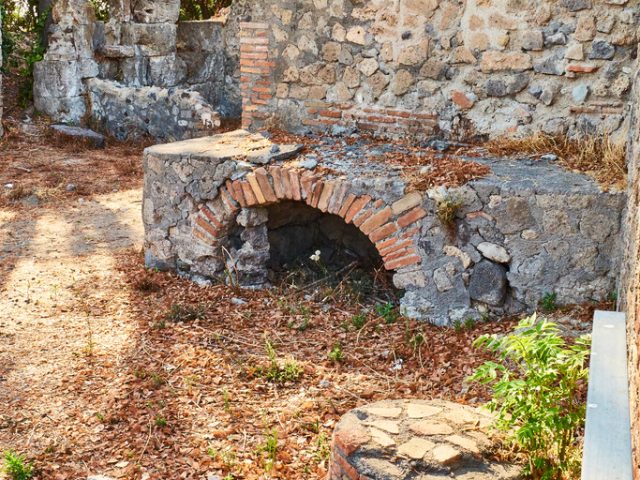
Excavations have revealed that thermopolia were constructed of small premises with large countertops in the front, some of them included sit-down table service for dining but, in general, the main purpose of these restaurants was selling take-out food.
John Donahue, the author of Food and Drink in Antiquity: A Sourcebook: Readings from the Graeco-Roman World, tells us that there were many Romans who lacked time and, above all, financial support to prepare meals at home (baking, heating, boiling) so they relied on either the bakery for food preparation or these eateries.
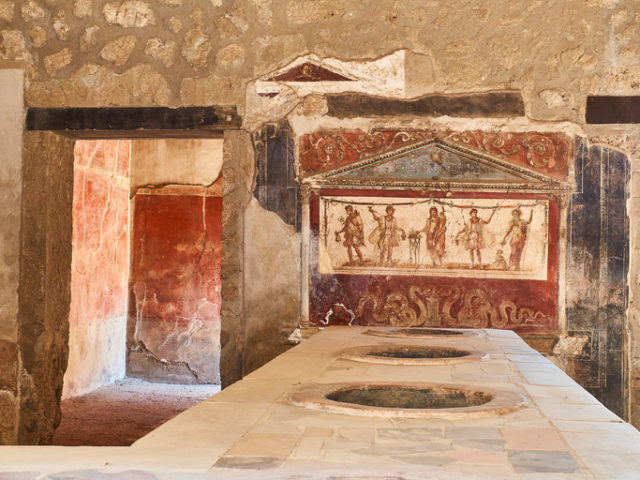
The deprived citizens of Ancient Rome couldn’t afford to have a kitchen at home and thus cook at home, so many of them would take their food to the baker who would cook it in their oven.
The menu included fish, meat, cheese, lentils, honey, nuts, and dried fruits as snacks and mulled wine. The interiors of these restaurants differed like those of today’s restaurants.
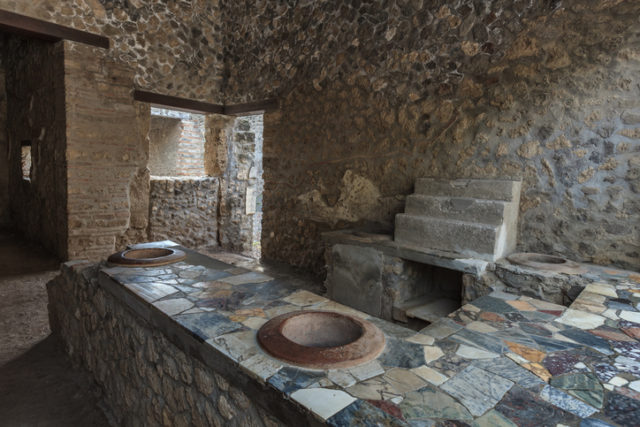
Some of them looked fancier than others, having dining rooms with dark-colored walls and ornaments. Nevertheless, these eateries were mainly focused on providing food on the go.
The countertops in the kitchens and food-preparation areas in the thermopolium were lined with terracotta jars (also known as “dolia”) filled with dried and cold food that could be heated up for customers or simply handed over to them. The hot meals were served in small pots.
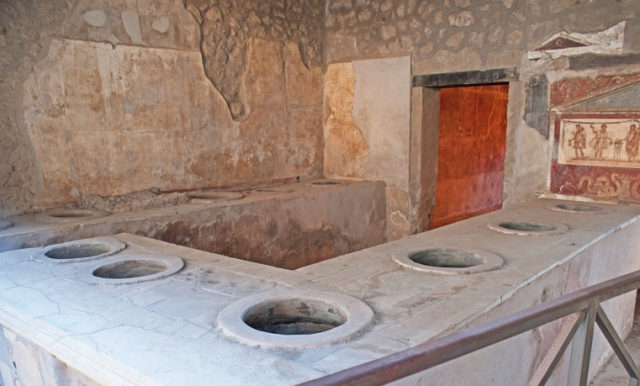
Historical records, as well as archeological findings, have shown that thermopolium were widely spread around the territory of Ancient Rome. Reportedly, there had been 150 restaurants of this type in Pompeii before the famous volcanic eruption occurred.
Mary Beard, a Classics professor at Cambridge University, described the take-out practice in Pompeii:“The best way to escape a diet of bread, cheese, and fruit, eaten in small lodgings over a shop or workshop, where there was limited or no facilities for cooking anything more interesting, was to eat out.”
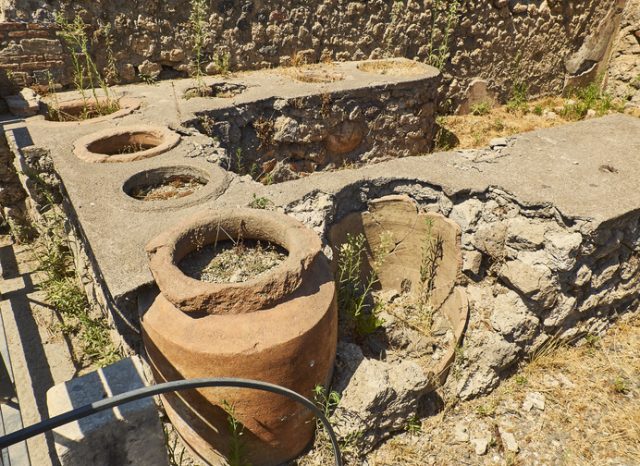
Pompeii has long been considered as having a type of cheap café culture, with bars, pubs, and thermopolia lining the streets, catching the street traffic, whoever it might be.
The stone counters facing the street, with large jars (dolia) set into them and display stands behind, are one of the most familiar aspects of the Pompeian street food scene, notes Mary Beard.
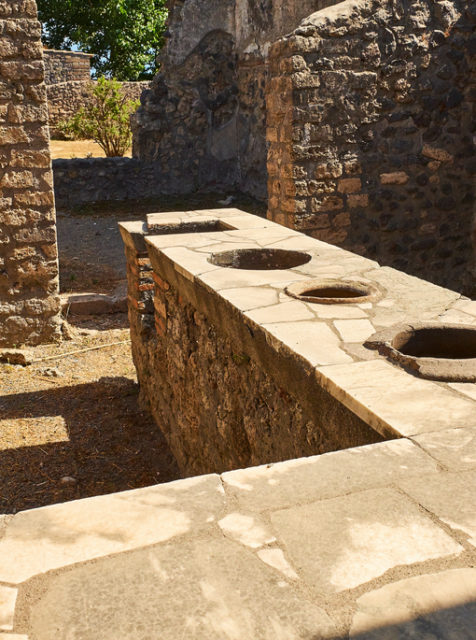
Surprisingly (or perhaps unsurprisingly), as Business Insider reports, the gastro-establishments of Ancient Rome were of ill repute due to the frequent gathering of gamblers and heavy drinkers.
The wealthy Romans despised and criticized these restaurants, yet they also occasionally grabbed a bite or two. Regarding this, some historians tell the story of Emperor Caligula who imposed a death sentence to a man who sold hot water.
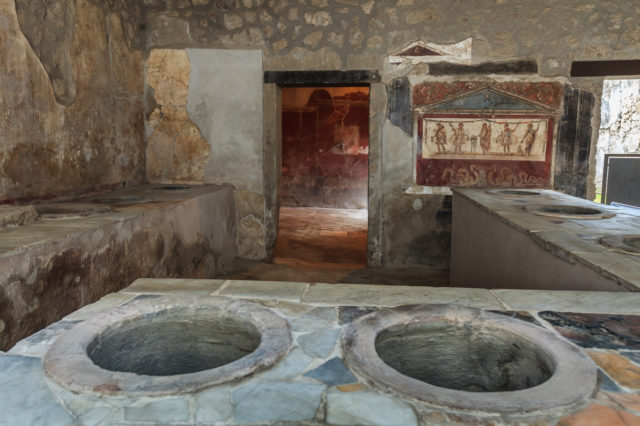
This deteriorated position of thermopolia in the public and, sometime later, Emperor Claudius resulted in the closing of many establishments due to public outrcy.
As time went on, archeologists have also found another destination where Roman take-out was very popular, the town of Herculaneum which was also destroyed by the volcanic eruption of Mount Vesuvius.
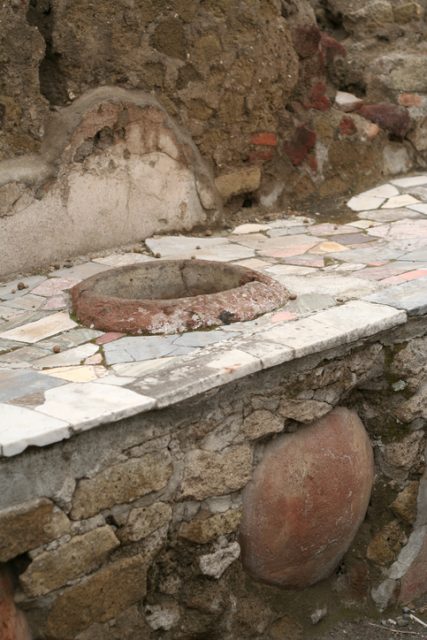
Finally, it was discovered that the Romans who didn’t consider thermopolia and their service as their cup of tea and preferred the“greasy spoon” were preferred guests in the “taberna.”
Read another story from us: A Golden Age? Life During the Pax Romana
The Taberna provided room for various business negotiations, accommodation for weary travelers and a market which offered cooked food, wine, and bread.
